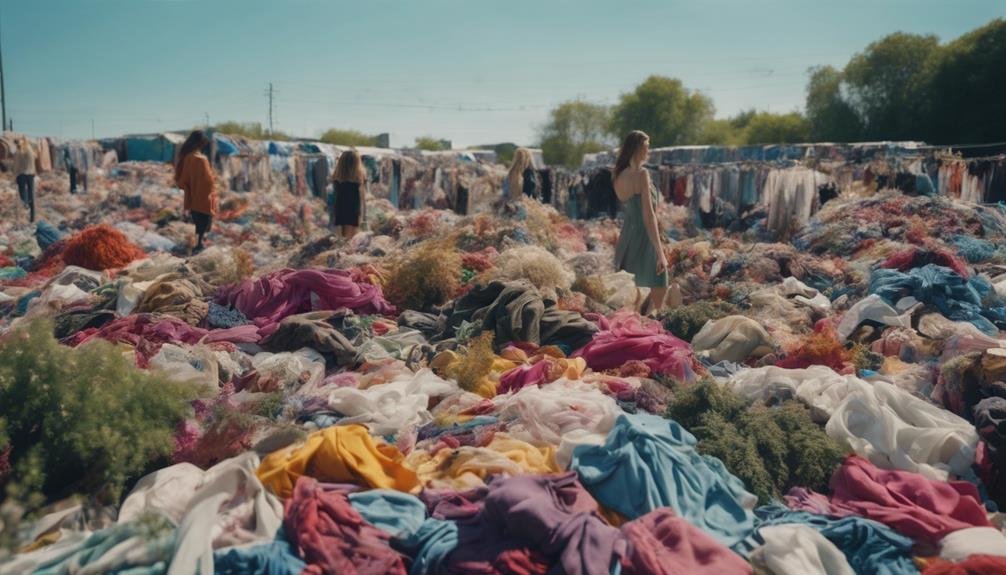
Fast fashion wreaks havoc on our planet, dumping millions of tons of waste and draining resources like water—think 715 gallons for just one cotton T-shirt. You can help combat this crisis by choosing sustainable options, like thrifting or investing in high-quality, timeless pieces that last longer. Stay alert to greenwashing; not everything marketed as eco-friendly truly is. Research brands that prioritize transparency and use recycled materials. By making mindful choices, you're part of the solution, promoting a more sustainable wardrobe and lifestyle. If you're eager to explore innovative strategies, there's much more ahead.
Key Takeaways
- Fast fashion causes significant environmental harm, generating textile pollution and contributing to the increasing volume of waste in landfills.
- Sustainable alternatives, such as circular fashion principles, transform waste into resources and prioritize eco-friendly materials.
- Investing in high-quality, timeless clothing reduces textile waste and supports sustainable craftsmanship, promoting longevity over fast consumption.
- Consumer mindfulness in purchasing, repair skills, and thrifting contribute to a more sustainable fashion culture and reduce overall waste.
Environmental Impact of Fast Fashion

Fast fashion wreaks havoc on the environment, driving pollution and waste to alarming levels that impact your planet daily. Every year, the industry generates millions of tons of textile pollution, with a staggering amount ending up in landfills after barely being worn.
To produce just one cotton T-shirt, your wardrobe can consume around 715 gallons of water, depleting vital resources and straining ecosystems. The laundering process further exacerbates these issues, contributing significantly to a garment's carbon footprint.
It's essential to recognize that your consumption choices have a direct influence on this destructive cycle. By seeking sustainable alternatives and reducing water consumption, you can play a crucial role in curbing the rampant environmental consequences of fast fashion and champion innovations that prioritize our planet.
Circular Fashion Principles
Embracing circular fashion principles can revolutionize your approach to clothing, transforming waste into valuable resources while promoting sustainability in your wardrobe. You can actively participate in a circular economy by prioritizing sustainable materials and reducing textile waste.
Start by choosing brands that utilize recycled fabrics and support innovations in eco-friendly textile production. Engage in practices like swapping garments with friends or shopping at thrift stores, which extend the lifecycle of clothes.
Repairing rather than discarding damaged items fosters a mindset of valuing quality over quantity. By making conscious choices, you not only influence the fashion industry but also cultivate a personal style that aligns with sustainability goals, ensuring your wardrobe is both chic and eco-conscious.
Investing in Quality
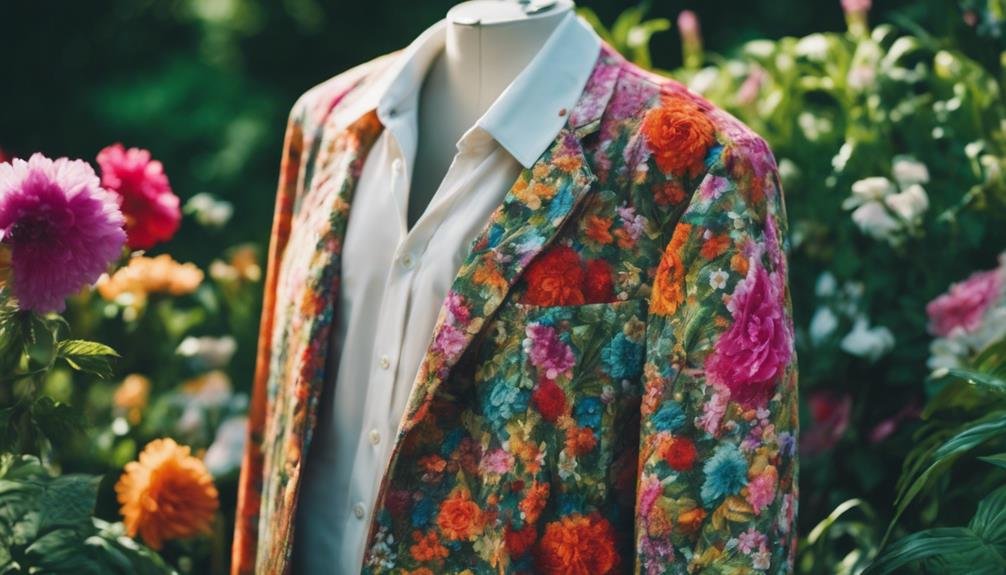
Investing in quality clothing not only elevates your wardrobe but also significantly reduces the environmental toll of fast fashion.
When you choose quality over quantity, you embrace sustainability and make a lasting impact.
Here are four reasons to consider timeless pieces:
- Longevity: High-quality garments withstand wear, saving you money over time.
- Versatility: Timeless pieces pair effortlessly with various styles, maximizing your outfits.
- Reduced Waste: Each well-made item contributes to a decrease in textile waste, protecting our planet.
- Ethical Choices: Supporting brands that prioritize craftsmanship fosters innovation in sustainable fashion practices.
Recognizing Greenwashing
How can you differentiate between genuine sustainability efforts and greenwashing tactics used by brands? It's crucial to decipher misleading claims to avoid supporting unsustainable practices. Examine a brand's overall practices, not just eco-friendly collections. Here's a quick guide:
| Indicator | Genuine Sustainability | Greenwashing Tactics |
|---|---|---|
| Transparency | Open about sourcing, labor, and waste | Vague statements, no specifics |
| Certifications | Third-party certifications | Self-proclaimed eco-labels |
| Product Lifespan | Durable, repairable products | Frequent new launches |
| Community Involvement | Engages with sustainable initiatives | Misses tangible impact |
Stay skeptical of marketing buzzwords, and research brands thoroughly. A small but growing number prioritize ethics over profit, paving the way for authentic change.
Importance of Transparency
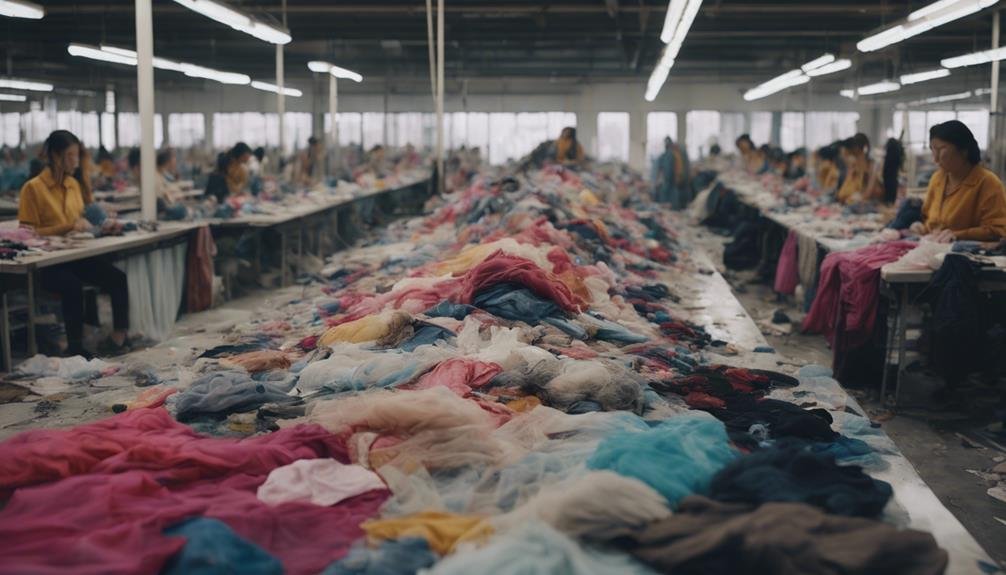
Transparency in the fashion industry isn't just a trend; it's an essential demand from consumers who deserve to know the true impact of their purchases on the environment and communities. Brand accountability and ethical sourcing are crucial in fostering trust between you and the brands you choose.
Consider the following:
- Understanding materials: Know what's in your clothing and its environmental footprint.
- Manufacturing processes: Are workers treated ethically and paid fair wages?
- Environmental policies: How do brands mitigate their impact on the planet?
- Recycling initiatives: Do they promote circular fashion or perpetuate waste?
Smarter Consumer Practices
Understanding the true impact of your fashion choices sets the stage for adopting smarter consumer practices that can significantly reduce waste and environmental harm.
Start by embracing mindful purchasing; consider the longevity and versatility of garments before buying.
Curate a conscious wardrobe filled with timeless, high-quality pieces rather than transient trends.
Prioritize brands that champion sustainability and transparency, ensuring your dollars support ethical practices.
Learn basic repair skills to extend the life of your clothing, combating the throwaway culture fast fashion fosters.
By shifting your mindset and investing in quality over quantity, you become part of a solution that promotes environmental balance.
Ultimately, your informed decisions can lead to a more sustainable fashion future.
Thrifting and Charity Shops
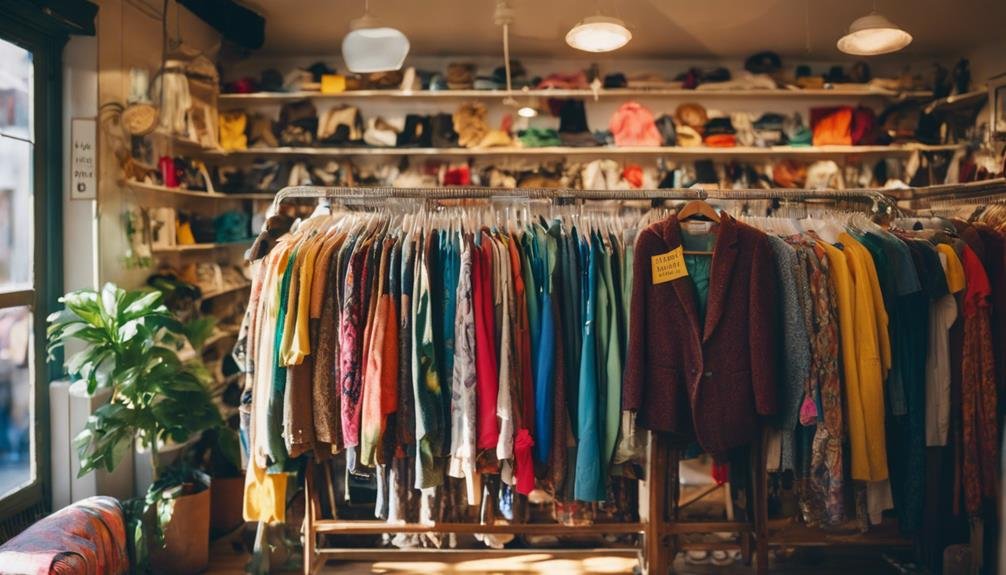
Thrifting and shopping at charity shops offer a refreshing alternative to fast fashion, allowing you to find unique pieces while actively contributing to a circular economy that reduces waste.
Embracing this innovative approach not only helps the planet but also leads to extraordinary discoveries.
Consider:
- Unearthing vintage treasures that tell their own story.
- Enjoying significant savings while redefining your style.
- Supporting local charities and communities, amplifying your impact.
- Discovering sustainable solutions embedded in every preloved item.
Influences of Celebrity Culture
Celebrity culture significantly influences fashion trends, with stars often leading the charge for sustainable choices that resonate with an increasingly eco-conscious audience.
When celebrities endorse ethical brands or showcase sustainable lines, they spark interest and inspire change among their followers.
Fashion influencers leverage their platform to promote eco-friendly styles, making sustainability both accessible and fashionable.
However, as you navigate this landscape, stay vigilant. Not all celebrity endorsements translate into genuine sustainable practices—some may veer into greenwashing.
By supporting authentic influencers and brands that prioritize transparency, you help shift the industry toward greener pastures.
Your choices matter, and by aligning with responsible celebrity-driven trends, you become part of a more innovative, sustainable fashion future.
Innovations in Sustainable Fashion
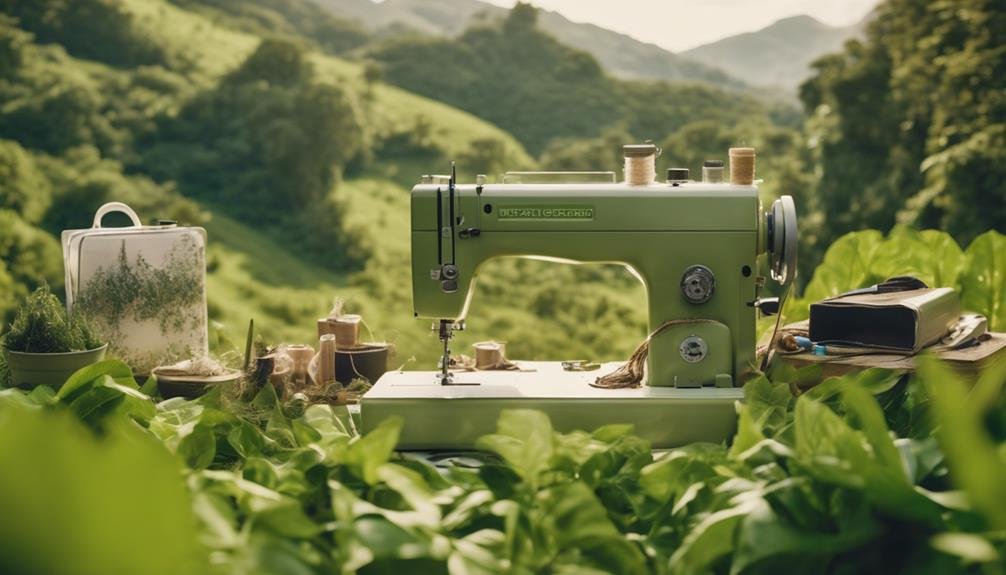
As you explore the innovative landscape of sustainable fashion, you'll discover groundbreaking materials and practices that not only minimize environmental impact but also redefine style in a more responsible way.
Here are some remarkable innovations making waves:
- Sustainable Textiles: Fabrics made from recycled plastics and organic materials are transforming the industry.
- Eco-Friendly Packaging: Brands are now using biodegradable and compostable packaging to reduce waste.
- Biodegradable Denim: Innovations allow for jeans that break down naturally at the end of their life cycle.
- Digital Fashion: Virtual clothing reduces resource use and offers endless style options without the environmental toll.
Conclusion
As you navigate the world of fashion, remember that every choice you make can either feed the beast of fast fashion or cultivate a greener future.
By embracing sustainable practices, you're not just dressing smartly; you're also sowing seeds of change.
Support brands that champion transparency, invest in quality pieces, and explore the treasures of thrift shops.
In doing so, you'll not only revamp your wardrobe but also nurture the planet, turning intentions into impactful actions.
